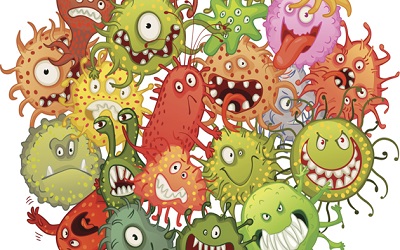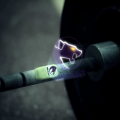PTE考生目前最大的问题之一就是练习题缺乏。除了有限的基本官方书(PLUS,Testbuilder, OG)之外,就没有题了。很多英语基础不是很扎实的同学很难找到练习材料。墨尔本文波雅思PTE培训学校专门为墨尔本,悉尼PTE考生准备了适合PTE听力阅读练习的科学60秒。各位PTE同学可以练习PTE听力中的summarise spoken text和PTE口语中的retell lecture,PTE听力口语-科学60秒-Frosty Moss练习记笔记技巧和复述。废话少说,下面开始:
听力内容:
60秒科学节目(SSS)是科学美国人网站的一套广播栏目,英文名称:Scientific American – 60 Second Science,节目内容以科学报道为主,节目仅一分钟的时间,主要对当今的科学技术新发展作以简明、通俗的介绍,对于科学的发展如何影响人们的生活环境、健康状况及科学技术,提供了大量简明易懂的阐释。
It’s one of the underwater world’s classic partnerships:clownfish and Nemo hides out in theanemone, which helps keep predatory fish at bay.
“But at the same time there are other fish species that will kind of nibble on the seaanemones, and the clownfish will actually go out and scare them away.” Jeff Gore, abiophysicist at MIT.
“So in this case there’s across–protection mutualism between these two species in which theyhelp to avoid predation.”
Such cross–protection is usually seen between two animals.
But Gore studies the same sort of mutualism in microbes.
He and his team demonstrated the first experimental example of that cross–protectiverelationship in drug–resistant microbes, using two strains of antibiotic–resistant E. colibacteria:
one resistant to ampicillin, the other to chloramphenicol.
The researchers grew the bacteria together in a test tube, in the presence of bothantibiotics.
And rather than succumbing to the drugs, each bacterial strain deactivated one of the twoantibiotics—thus protecting the other strain.
That activity led to a stable coexistence over time.
Which Gore says could in theory give the bugs an opportunity to swap resistance genes,through what’s called horizontal gene transfer—one bacterium donates genetic material toanother.
Any such transfer could make either or both strains individually resistant to both types ofantibiotics.
The findings are in the Proceedings of the National Academy of Sciences.
The same story might play out in our guts, too—but it’s too early to translate it into medicalguidance.
“It’s always important to remember that just because we see a particular dynamic in thelaboratory doesn’t mean we should immediately go and change our clinical dosing practices.
But then those sorts of results are then used as a guide for the kinds of phenomena thatclinicians may want to watch out for in their circumstances.”
Cause the more we know about this bacterial buddy system, the better we may be at breakingit up if they team up against us.





